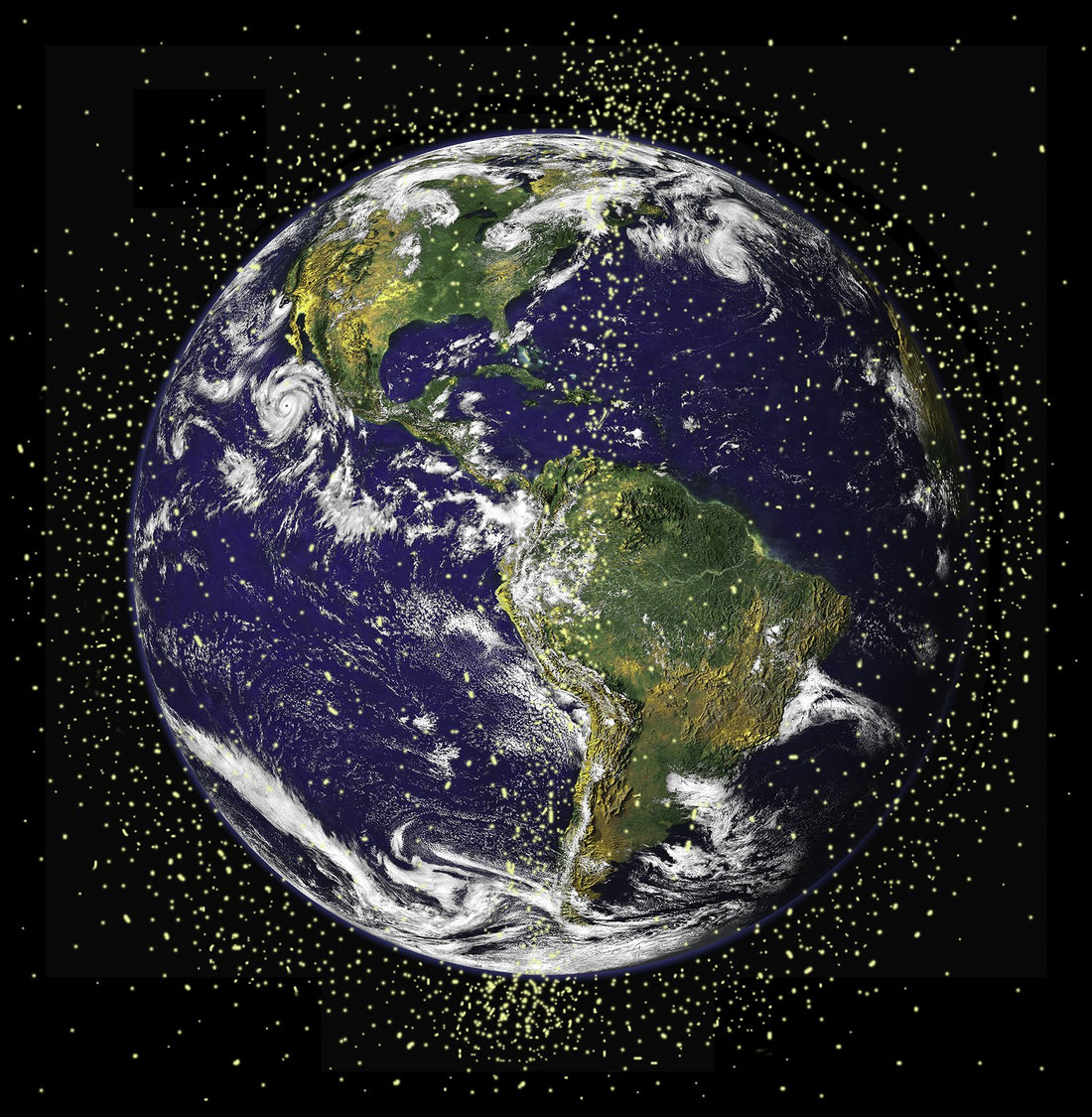
Low Orbit Garbage Has Classified Large Parts of Earth As "Light Polluted," Scientists Reveal
Share
A new study in the Monthly Notices of the Royal Astronomical Society details how our night sky is increasingly obscured by swathes of reflective space junk.
The researchers found that over 8,440 tons of reflective, metallic space debris has increased the brightness of the night sky by more than 10% over large parts of Earth.
An increase of this magnitude means these regions fall into the category of “light polluted” and becoming more difficult for astronomers to collect accurate data or make breakthrough discoveries. "We expected the sky brightness increase would be marginal, if any, but our first theoretical estimates have proved extremely surprising and thus encouraged us to report our results promptly," said lead study author Miroslav Kocifaj of the Slovak Academy of Sciences.
To calculate the change in brightness, the researchers devised a model that takes all of the debris' average brightness and size into consideration.

Over 8,440 tons of reflective, metallic space debris has increased the brightness of the night sky by more than 10% over large parts of Earth.
The researchers said that the space junk and satellites ruin astronomical images by scattering light from stars reflected off them, thereby producing bright streaks brighter than astrophysical objects, making it impossible for them to get a clear picture.
The effect is most noticeable when viewing the cosmos with low-resolution detectors, like the human eye, leading to a diffuse brightness across the whole night sky. Light pollution can ruin the images of telescopes with high vertical resolution and high sensitivity, although they will likely be able to resolve the junk-reflected light as smears. It may still obscure astronomical sights, however, such as the glowing clouds of stars that wind along the Milky Way disc, no matter where astronomers are in the world.
Study co-author John Barentine, director of public policy for the International Dark-Sky Association, added, "Unlike ground-based light pollution, this kind of artificial light in the night sky can be seen across a large part of the Earth's surface. Astronomers build observatories far from city lights to seek dark skies, but this form of light pollution has a much larger geographical reach."

New fleets of private satellites are clogging the night sky
And the night sky could get even more cluttered with brightness, especially with the installation of new commercial satellites known as “mega-constellations,” which aim to distribute internet access globally. Several operators, including Amazon, SpaceX, and OneWeb, plan to launch new mega-constellation satellites or expand their networks. As of today, Starlink consists of 1,200 satellites in orbit, but SpaceX intends to increase its fleet to 42,000 over the next four decades — approximately 14 times the number of satellites in orbit today.
Additionally, satellite collisions are more likely to happen due to the increasingly crowded sky, resulting in more shiny debris.

Rocket body fragments captured by the Deimos Sky Survey (DeSS), some highlighted in red, as they join the millions of other pieces of space debris in the skies above Earth. Image: ESA.
According to the European Space Agency (ESA), one solution to the problem could be the launch in 2025 of a four-armed robot that will be able to grab individual pieces of space junk.
The aim of the mission is to test the use of a fleet of robot cleaners in a much wider-reaching operation. Meanwhile, ESA CEO Johann-Dietrich Wörner has proposed new rules to ensure that satellite companies and agencies have responsibility for cleaning up their litter. Scientists from Australia even proposed using a laser to blast the junk from space.
This paper aims at raising awareness of the detrimental effects of night skies filled with trash. "Our results imply that many more people than just astronomers stand to lose access to pristine night skies," Barentine said. "This paper may really change the nature of that conversation."
#Space_Aus




